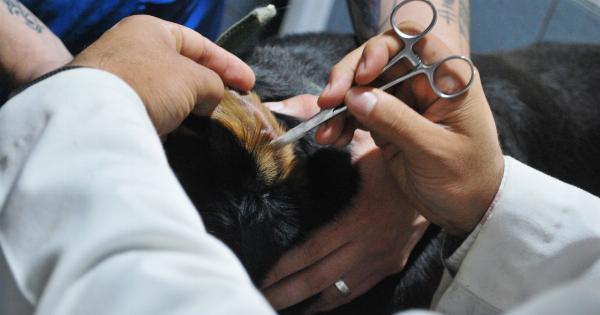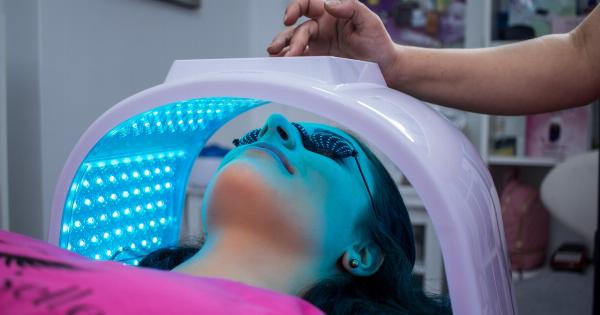Earwax, also known as cerumen, is a natural substance produced by glands in the ear canal. It plays a crucial role in protecting our ears from dust, bacteria, and other foreign particles.
Earwax is made up of a combination of dead skin cells, hair, and secretions from the glands.
The Purpose of Earwax
Contrary to popular belief, earwax is not a dirty or harmful substance. It serves as a lubricant and cleanser for the ear canal, preventing it from becoming dry and itchy.
The sticky texture of earwax helps to trap dust and debris, preventing them from reaching the delicate structures of the inner ear. Additionally, earwax has antibacterial properties that help to protect the ear from infections.
Types of Earwax
Believe it or not, there are two main types of earwax – wet and dry. The type of earwax you have is determined by your genetics.
People of Asian and Native American descent are more likely to have dry earwax, while those of African and European descent are more likely to have wet earwax.
Signs of Healthy Earwax
In general, healthy earwax should be a light golden color and have a soft, sticky texture. It should not have a foul odor or cause any discomfort. If you notice any of the following signs, it may indicate an issue with your ear health:.
1. Excessive Earwax Buildup
If you constantly feel like your ears are blocked or your hearing is impaired, it could be a sign of excessive earwax buildup. While earwax is meant to protect the ear, too much of it can become a problem.
Excessive earwax can cause earaches, tinnitus (ringing in the ears), and temporary hearing loss.
2. Different Earwax Color
While earwax is typically golden in color, it can sometimes appear different due to various factors. If you notice a sudden change in the color of your earwax, it may indicate an infection or injury.
Dark brown or black earwax could be a sign of old earwax that hasn’t been properly cleaned.
3. Unpleasant Odor
Healthy earwax generally doesn’t have a noticeable smell. However, if you experience a foul odor coming from your ears, it could be a sign of an infection or an underlying health condition.
It’s important to consult a healthcare professional if you notice any unusual odors.
4. Earwax Discharge
If you notice any unusual discharge or pus coming from your ears, it could be a sign of infection or injury. This should be taken seriously and evaluated by a medical professional to determine the underlying cause.
Causes of Earwax Abnormalities
Various factors can contribute to abnormalities in earwax. Some of the common causes include:.
1. Improper Ear Cleaning
Using cotton swabs or other objects to clean your ears can push the earwax deeper into the ear canal, causing it to build up. It can also lead to injuries or damage to the delicate structures of the ear.
It is best to avoid inserting anything smaller than your elbow into your ear!.
2. Infections or Injuries
Infections or injuries to the ear can cause changes in the production and composition of earwax. Infections such as otitis externa (swimmer’s ear) can lead to a foul odor or discharge from the ear.
It is essential to seek medical attention if you suspect an infection or injury.
3. Skin Conditions
Certain skin conditions, such as eczema or psoriasis, can affect the ear canal and result in abnormal earwax production. In these cases, the earwax may be drier or stickier than usual.
When to Seek Medical Help
While occasional variations in earwax are normal, there are situations where medical attention is necessary. You should consult a healthcare professional if you experience:.
1. Severe Ear Pain
If you have intense ear pain that persists or worsens over time, it could be a sign of an ear infection, injury, or impacted earwax. Prompt medical attention is essential to prevent further complications.
2. Sudden Hearing Loss
If you experience a sudden decrease in hearing ability, it could indicate a serious underlying issue. It is crucial to seek immediate medical attention to determine the cause and prevent permanent hearing loss.
3. Persistent Symptoms
If you have ongoing symptoms such as itchiness, dizziness, ringing in the ears, or a feeling of fullness in the ears, it is advisable to consult a healthcare professional.
These symptoms could indicate an underlying condition that requires medical intervention.
Safe Earwax Removal Techniques
It is important to note that earwax performs essential functions and should not be completely removed from the ears. However, in cases of excessive buildup or discomfort, there are safe methods to remove excess earwax:.
1. Ear Drops
Over-the-counter ear drops can help soften the earwax, making it easier to remove. Follow the instructions carefully and consult a healthcare professional if your symptoms persist.
2. Ear Irrigation
Your doctor may recommend ear irrigation to remove stubborn earwax. It involves using a syringe filled with warm water to gently flush out the ear canal. This should only be done by a healthcare professional to avoid damage to the ear.
3. Manual Removal
In some cases, a healthcare professional may manually remove the earwax using special instruments. They have the expertise to do this safely and effectively.
Conclusion
Earwax is a natural and necessary substance that plays a vital role in protecting our ears. However, changes in its color, consistency, or odor may indicate an underlying health issue.
It’s important to pay attention to any abnormalities and seek medical attention when necessary. Remember, when it comes to earwax, a little goes a long way!.




























